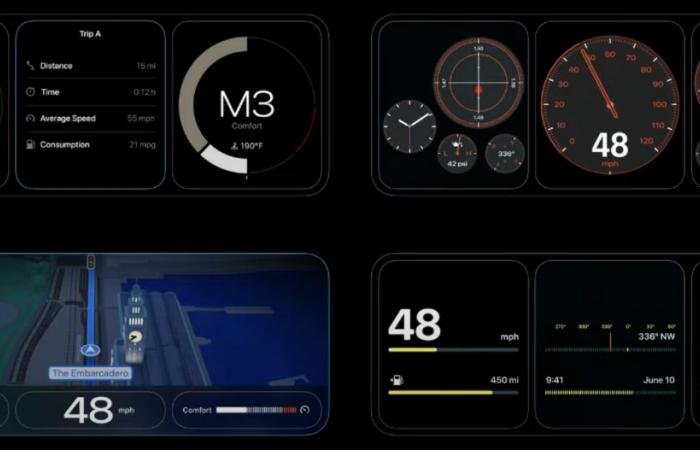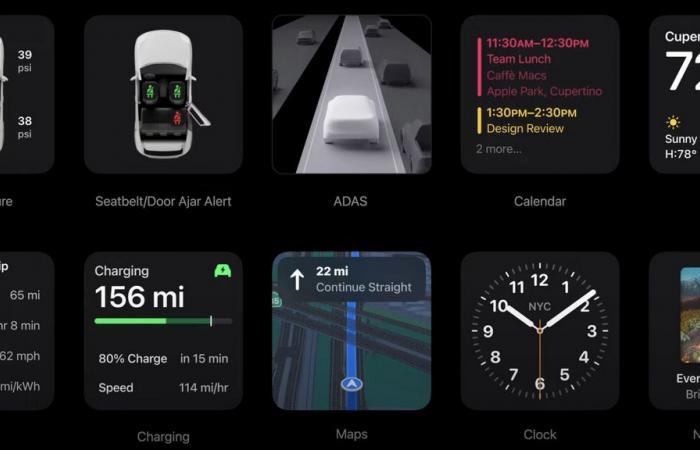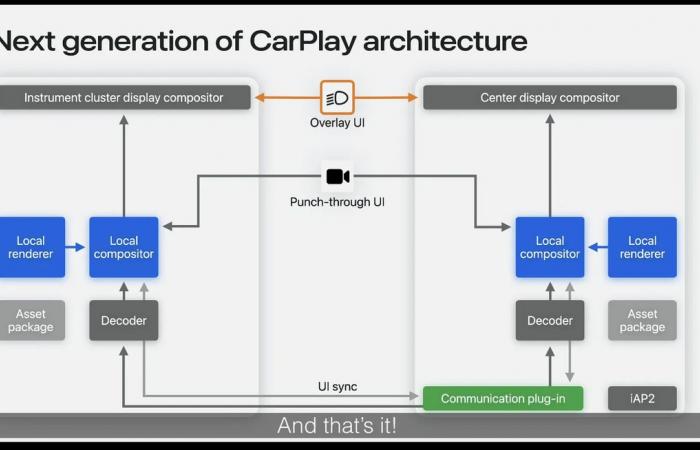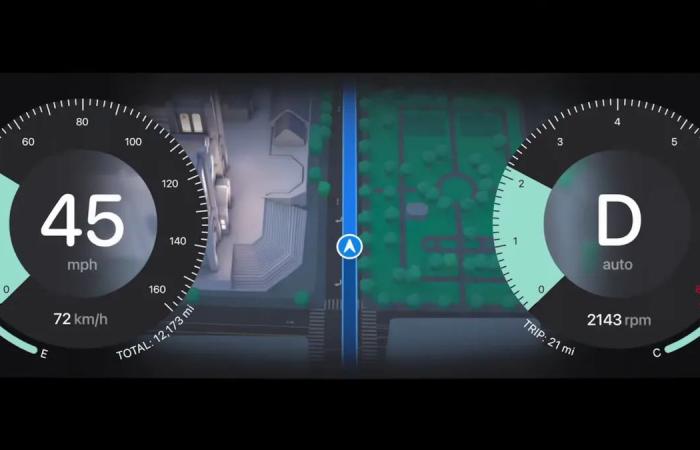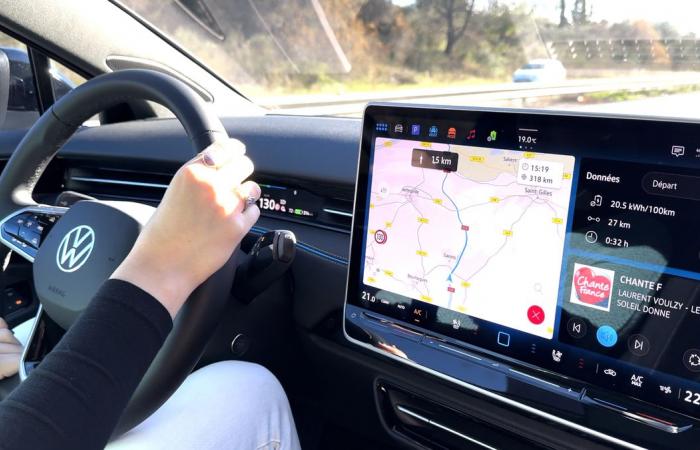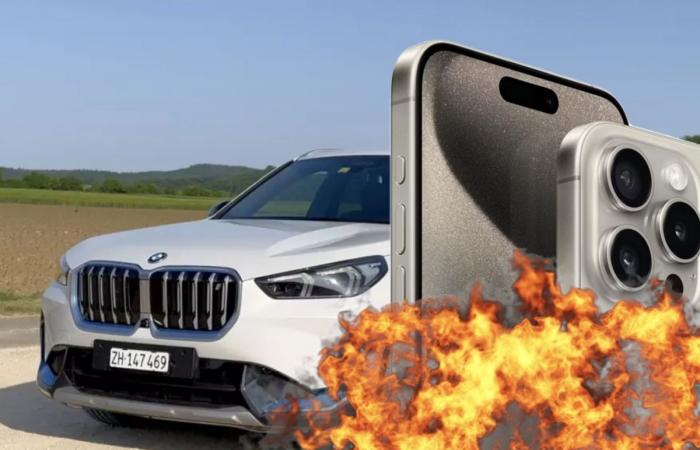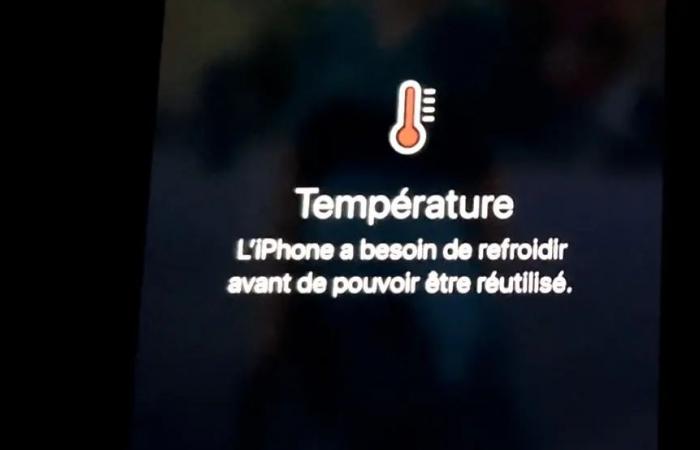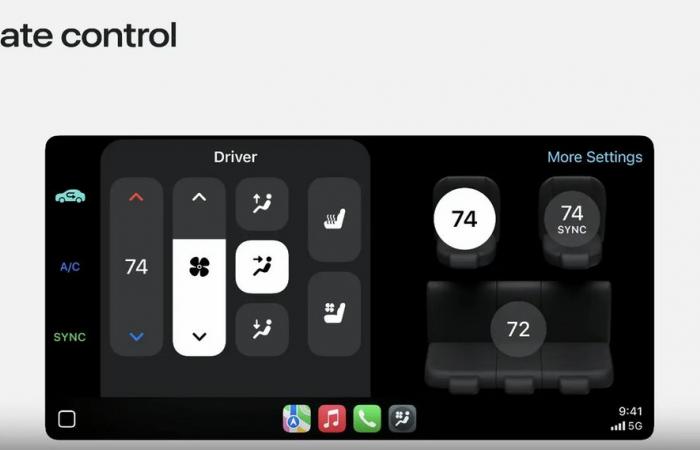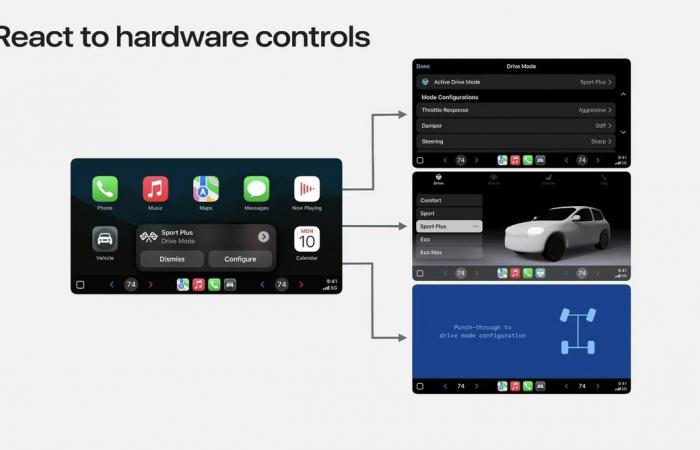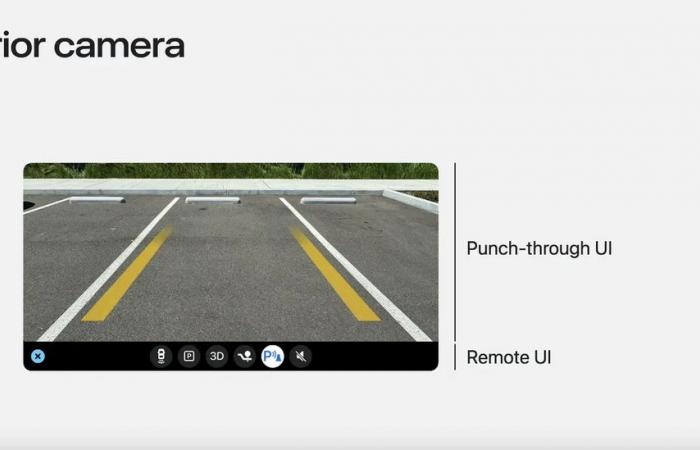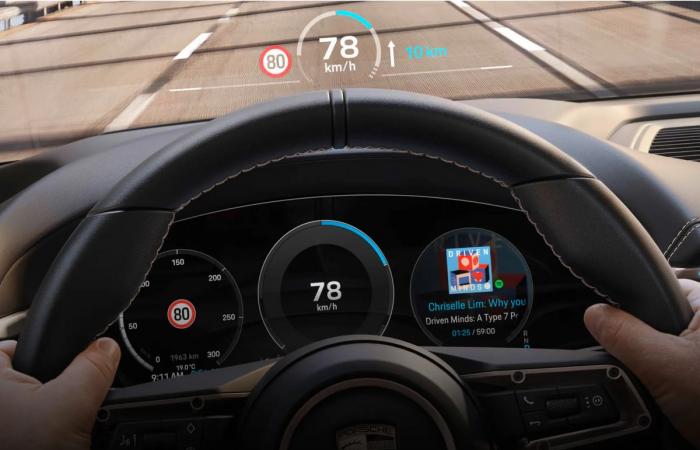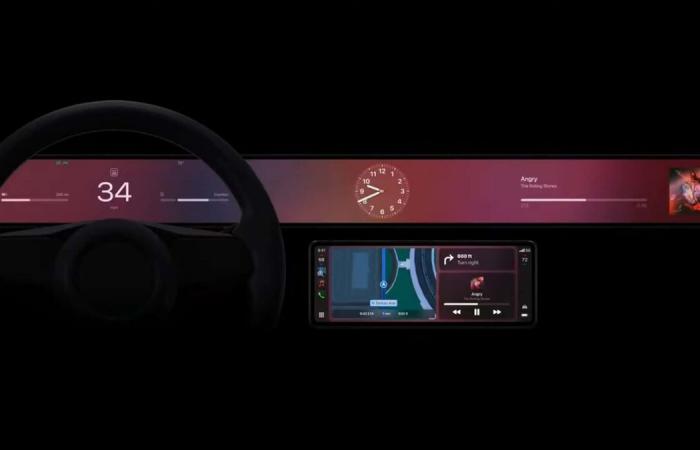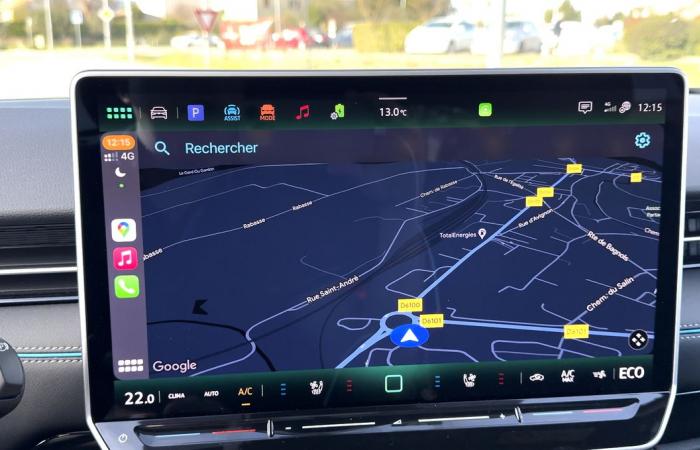the oldCarPlay continues to evolve very slightly with iOS 18, the next generation was talked about again during WWDC 2024, with a video demonstration of the interfaces (see our post), intended to be reassuring about the means put in place by Apple to continue the development of its solution.
It is true that since the presentation of this system in 2022, no vehicle has yet adopted this CarPlay Nex-Gen
And the announcement of partnerships is still limited to a few rare premium manufacturerslet us cite Porsche and Aston Martin, far from the large generalist groups.
CarPlay 2.0 will replace the integrated system
Demos based on computer-generated images are good, but what interests us is also the technical part: how will this new CarPay really work? Is it iPhone-based only or will it come pre-installed in the vehicle?
Today, CarPlay is just a replication of the iPhone on the car screena system simple
to be put in place, which is just partially superimposed on an on-board system – the manufacturer retains control over the vehicle’s functionalities, such as meters, air conditioning, heated seats, etc. The vehicle only provides some data, such as GPS or tactile feedbackalthough a few (like Porsche) have implemented air conditioning controls for example.
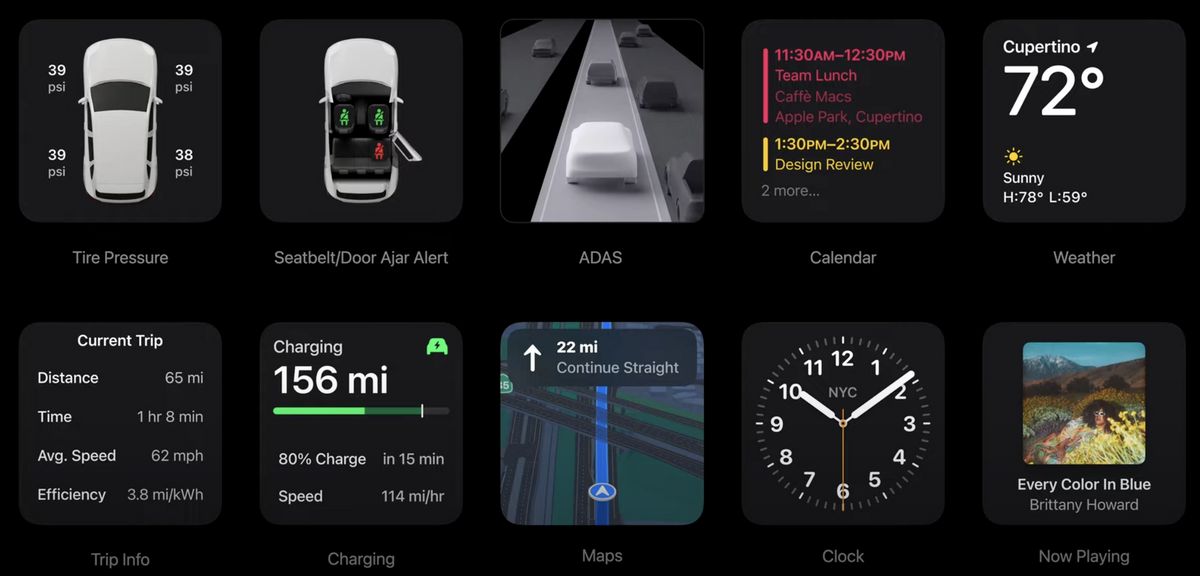
With the new CarPlay, Apple wants to go further, by replacing speedometers, allowing adjustment of all car parametersincluding ventilation, heated seats, consumption, routes, headlights… In short, everything goes!
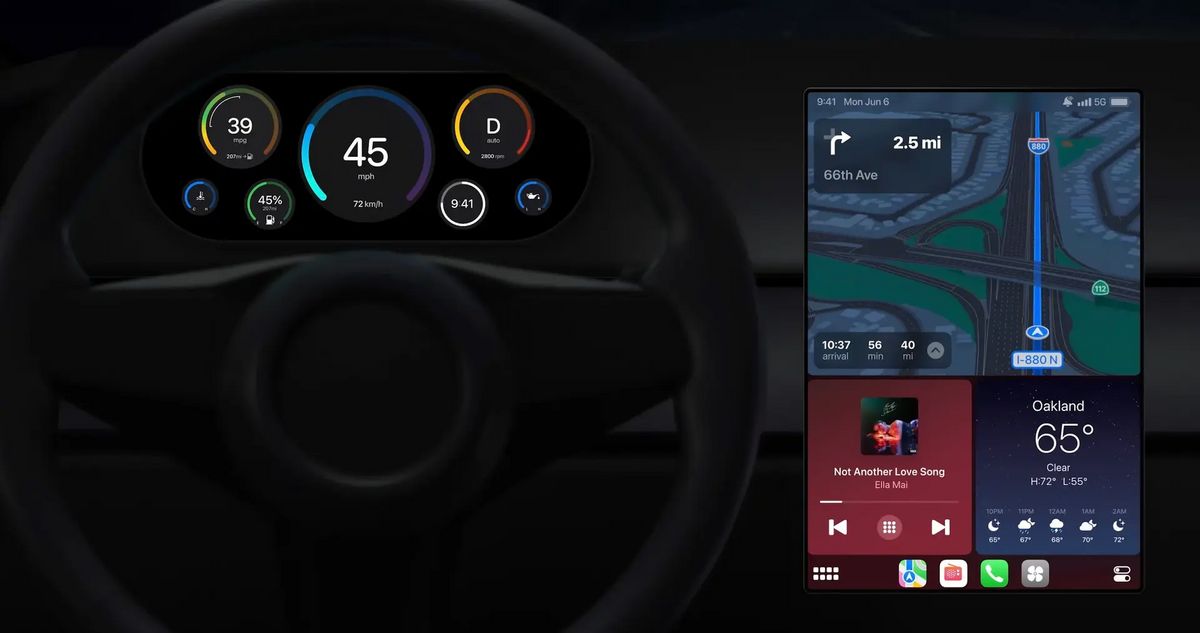
We’re actually getting closer to Android Automotive, except that the Google system is native on the car, it almost completely replaces that of the manufacturer, who simply adapts the interfaces – in reality, it is often hybridized, with a proprietary part, as for speedometers for example. But impossible for the customer to do without Android Automotive, while the new CarPlay remains optionaland this is what risks posing a problem for manufacturers, as we will see.
A partly local wireless architecture
When you open the car door, with the iPhone in your pocket, it will begin to connect to the vehicle wirelessly. In fact, the new CarPlay absolutely needs WiFi to capture data and video streams.
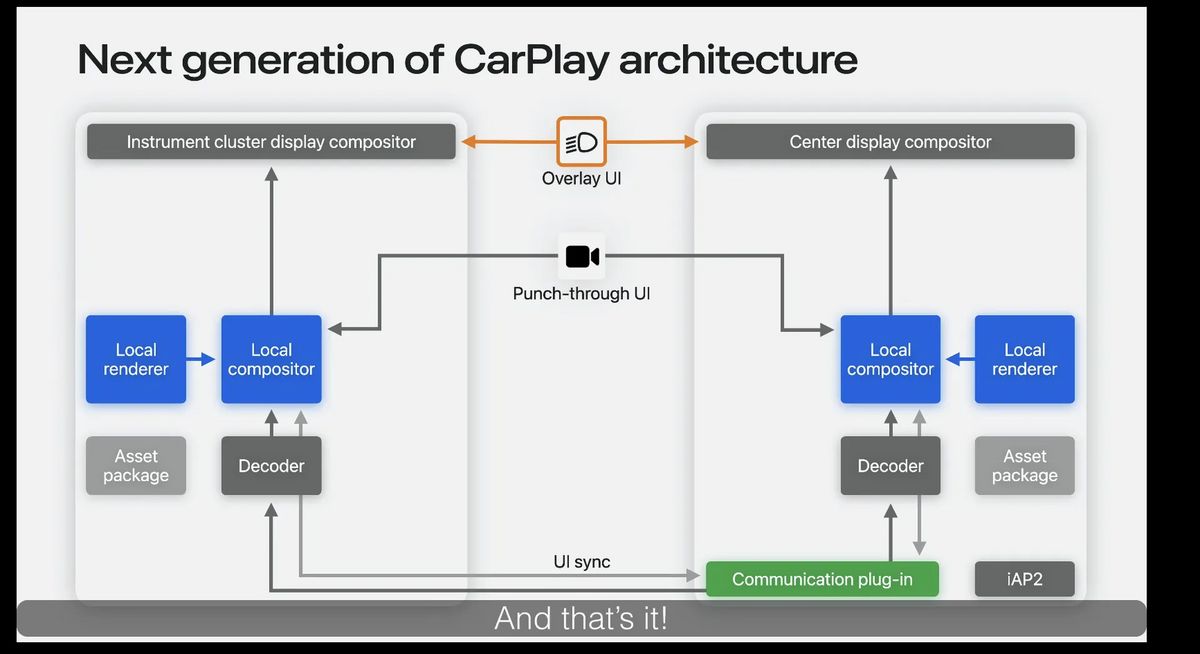
As I suspected, there is indeed a local part, certainly limited, but a small system will work well on the car. It will always display the speedometers, indicators, rev counters (for thermal) and even the odometer. Some ADAS and indicator lights are also affected, for safety reasons. This allows the car to still have a minimalist but necessary display for driving, which does not depend on iPhone connectivity.
Imagine that the iPhone reboots, that the connection does not start quickly enough… In short, the hazards of connectivity: you will always be able to drive your vehicle, which will then be managed by the car directly.
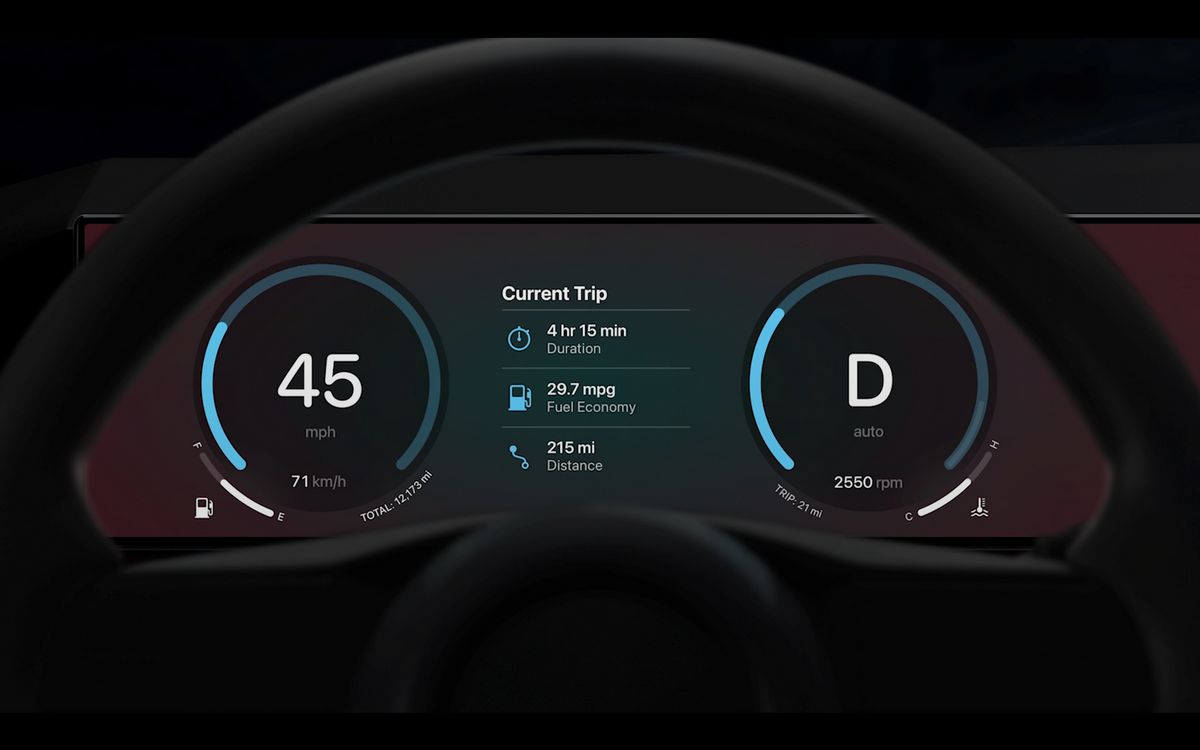
Apple offers predefined styles to manufacturers, with customization possibilities, but still within the general theme. Besides, it is not possible to change the font, the famous San Francisco
dear to the Cupertino company.
4K60FPS video streams over WiFi, really?
The part that intrigues me the most in this architecture is the centralization of video streams on the iPhone.

You understand, the car will send driving data, consumption data, GPS data, etc. on the phonewho will then do his little kitchen and generate the interfaces, transmitted via video streams over WiFI.
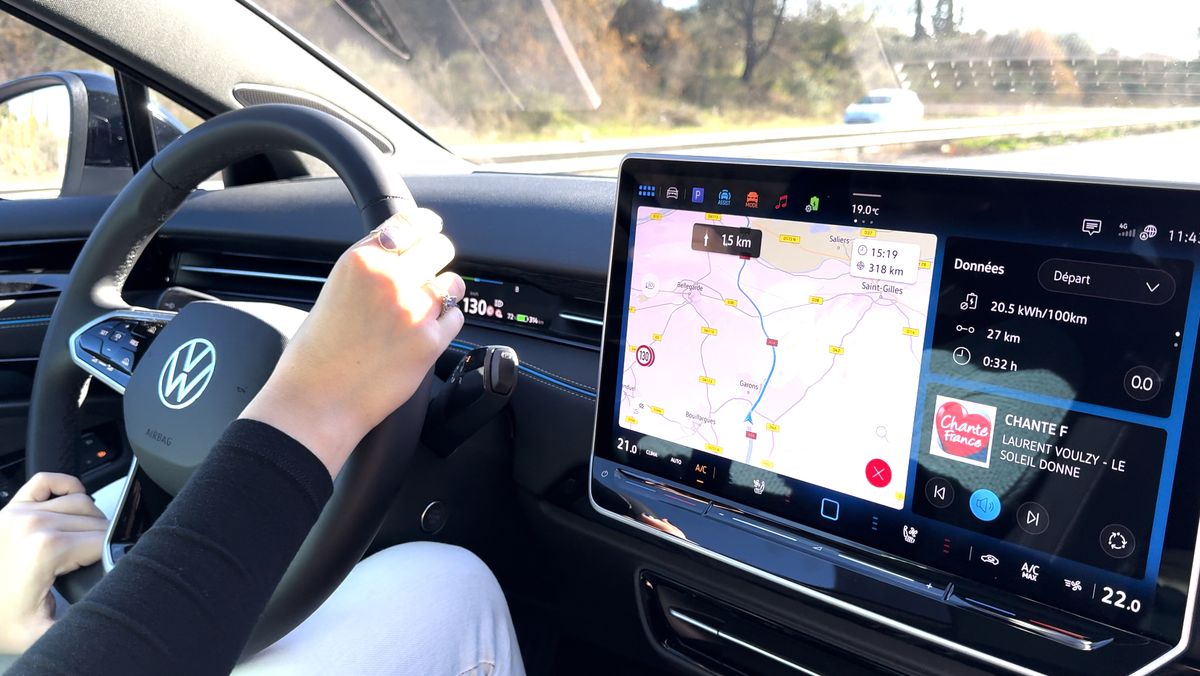
Today, vehicles carry very well defined slabs, it is no longer rare to have one or more 1080 or 4K screens in the car for example. We must therefore imagine that the device will be able to generate images and send them to the car in real time, at 60FPS, on all of the monitors.
Obviously, these are touch screens, and when the user goes to adjust their air conditioning settings or change their route, the iPhone should launch new apps, adapt the display… in short, like on a computer whose screens are connected via WiFi.
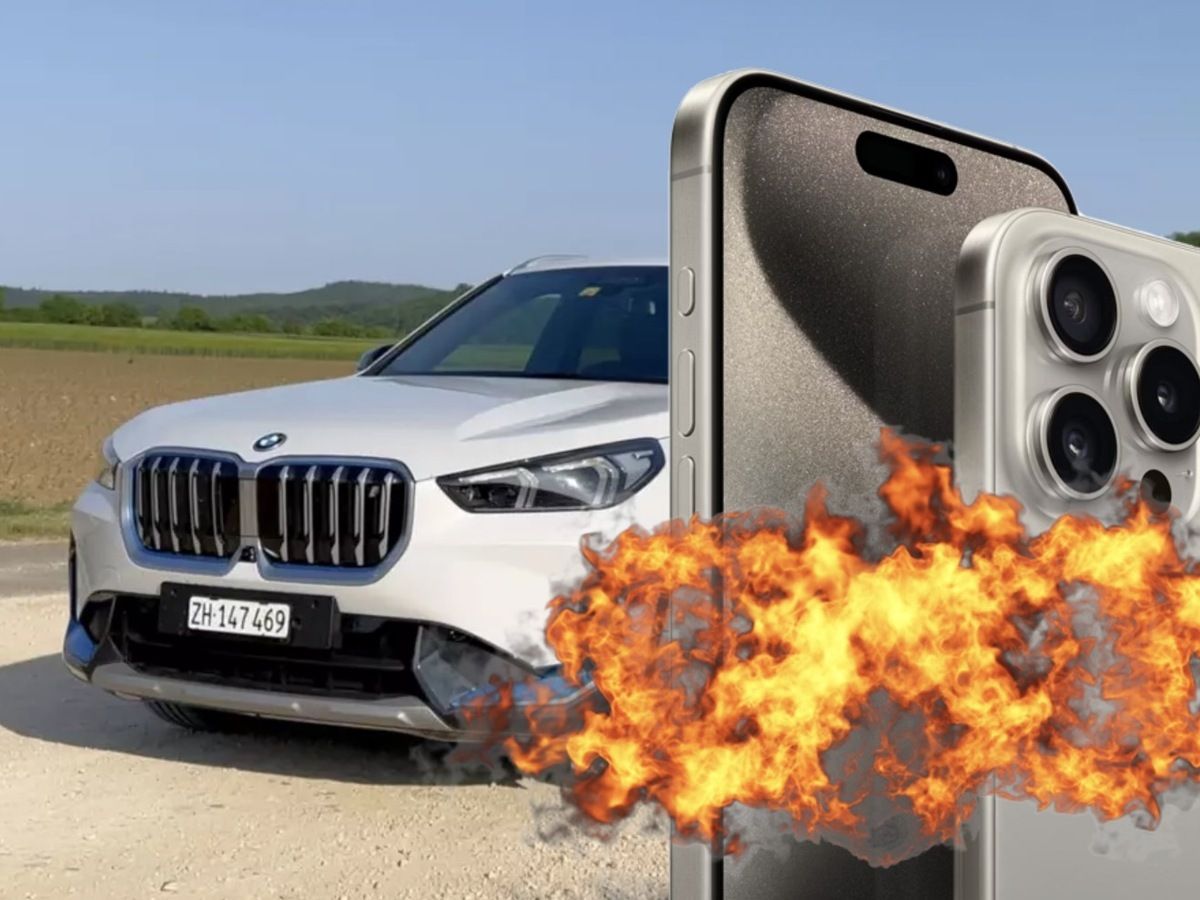
Rather than embedding a native system in the vehicle, with an M1 chip for example, Apple therefore prefers to manage all the intelligence from the smartphone, a fairly risky bet in terms of performance. Those who already use CarPlay on a daily basis know how difficult the device is to hold a charge in the car: as long as the iPhone is charging (essential here), especially wirelessly, it is not uncommon for the latter to overheat, and we are only talking here about a simple CarPlay in screen mirroring! So imagine the same thing with 2 or 3 4K screens over WiFi…
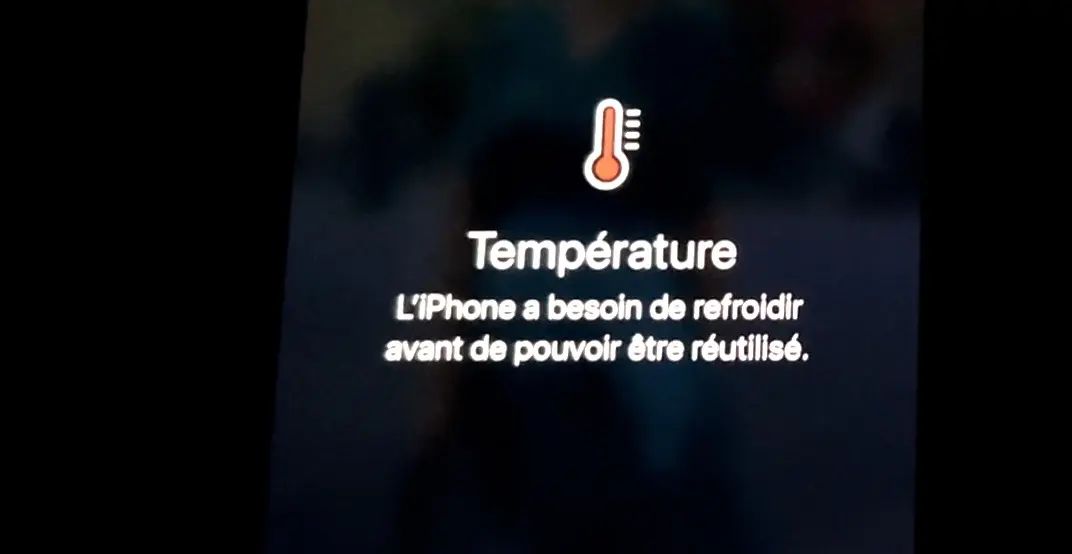
Lots of work for builders
On the manufacturers’ side, they will therefore have to build their own interfaces with the bricks provided by Apple.

Depending on the options, settings, screen sizes, the UIs will therefore evolve, and each manufacturer will then have to carry out integration work quite important, but similar to what is already done in Android Automotive.
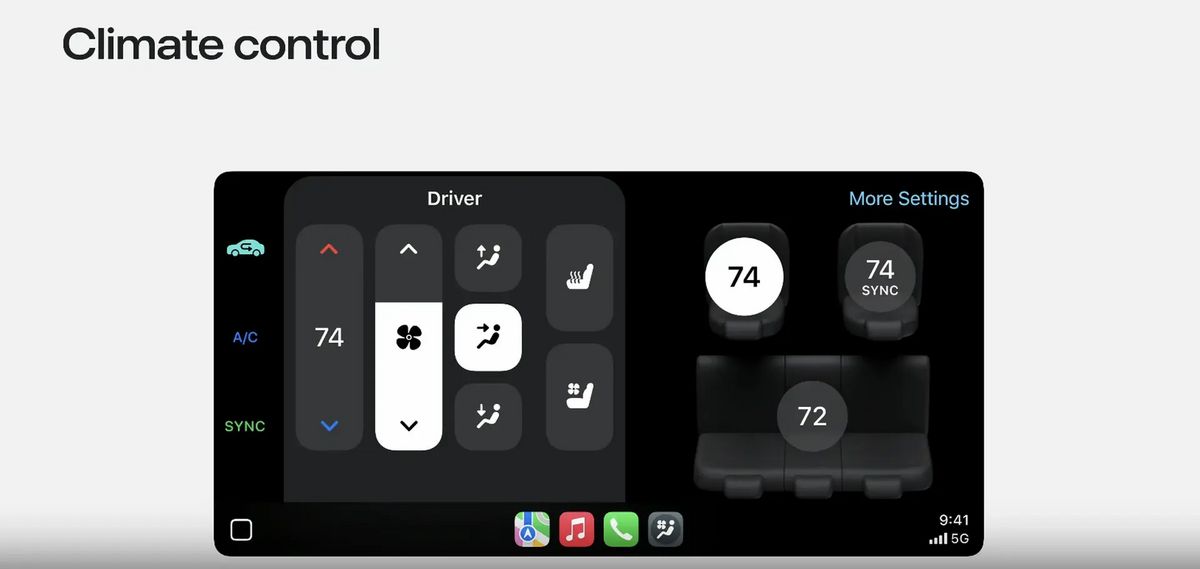
Problem, if the customer doesn’t have an iPhone… there will be no CarPlay! You follow me ? We will therefore have to carry out the work twice: integration for CarPlay and a second OS for Android users or those who do not have a smartphone.
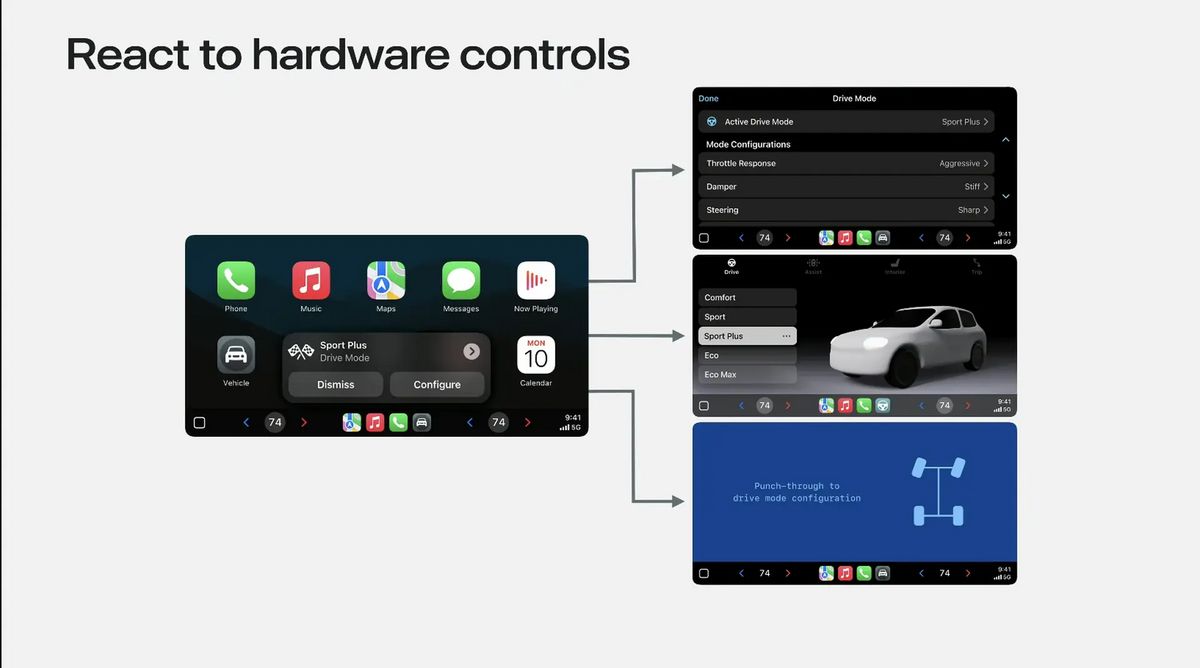
To speed up implementation, Apple has also expected that manufacturers can be a little lazy, and do not wish to adapt 100% of the functionalities to CarPlay, at least, at first. This is why a mode punch-through
will allow them to place in-house interfaces (ugly
, so ^^) in the middle of CarPlay. Apple takes the example of a reversing camera, which would be complicated to manage from CarPlay -the video signal would have to be captured and sent back to the interface… which risks creating latency, unthinkable when performing a maneuver.
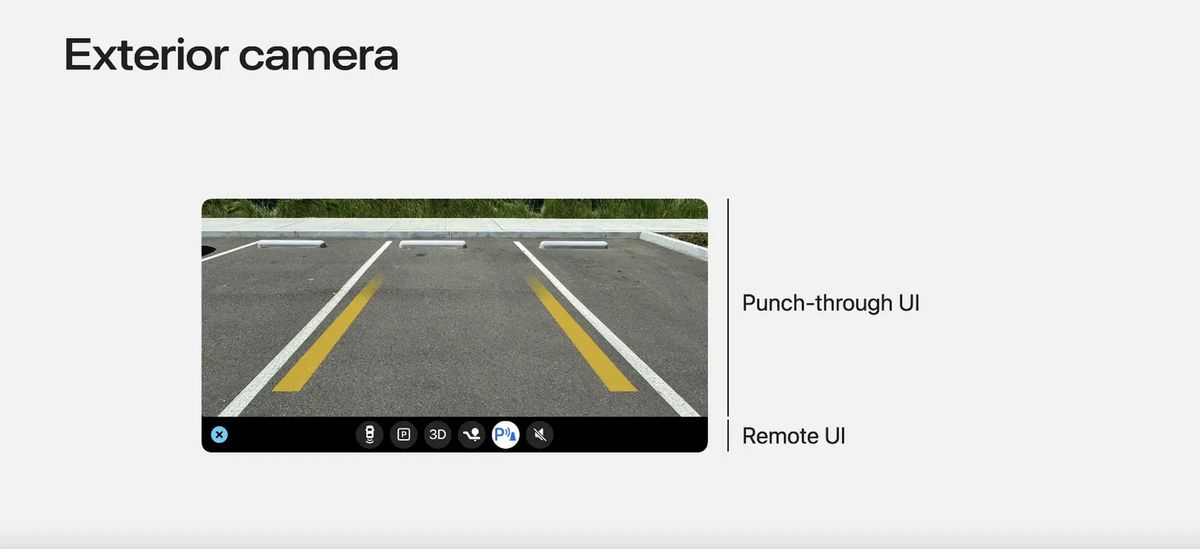
In practice, this mode punch-through
will also be used for interfaces that are too specificfor example the mode track
of a sports car often offers many parameters that would be long and expensive to adapt in CaPlay – and undoubtedly not very useful, given the limited audience. If you have slightly exotic seat massage settings, or artificial smells, as with Mercedes, we imagine that manufacturers will prefer to use their own interfaces. We must also understand that Apple probably does not provide 100% of the possible interfaces, there is certainly a race to the bottom here.
Justified ambient skepticism
As we have seen, this new CarPlay above all resembles a more global evolution of the current model: the iPhone remains at the heart of the action, and there is no question for Apple of permanently installing a complete system in the vehicles.
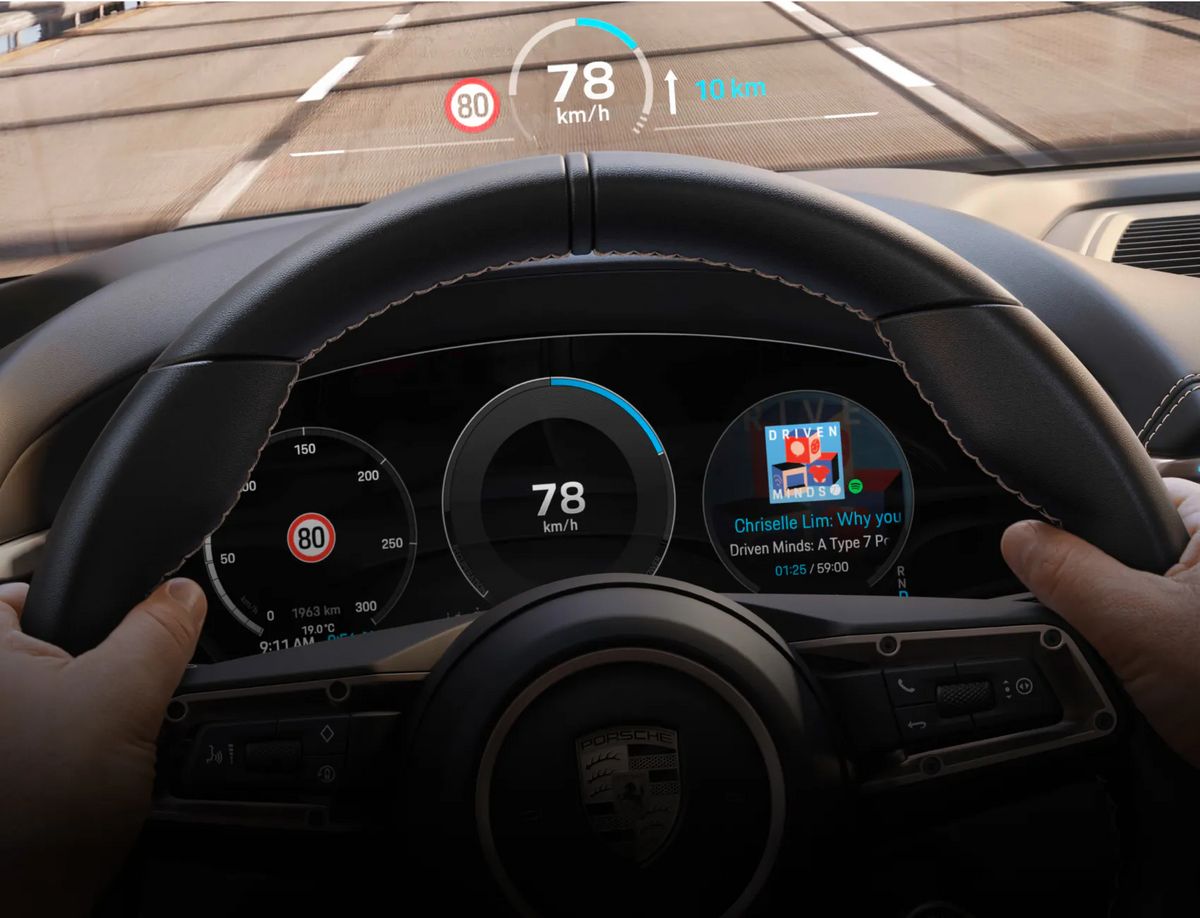
The interface of the new Porsche Macan looks like CarPlay 2.0
This choice of architecture will therefore force manufacturers to carry out the work twice., we could even imagine having Android Automotive on one side, but which is capable of being replaced by the new CarPlay! This would effectively allow manufacturers not to choose between the two, but imagine working with two integrations in parallel – and the resulting costs.
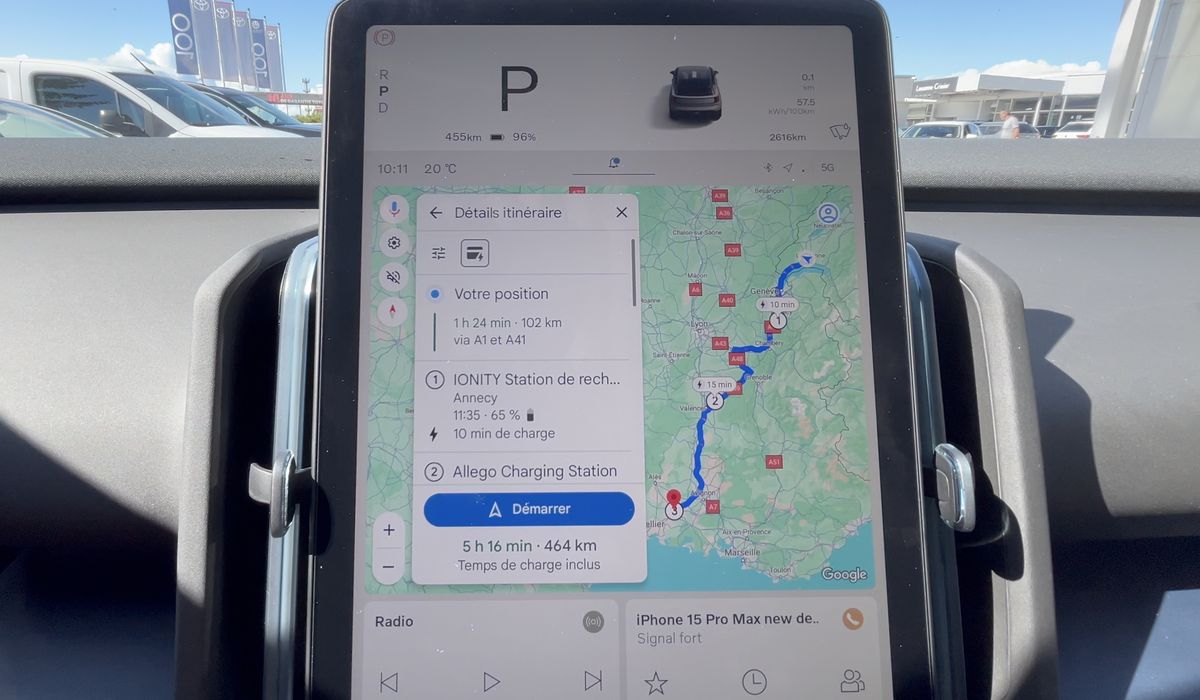
Today, manufacturers only have two options: either develop their own OS or use Android Automotive. It is even possible to combine the two, as at Stellantis or Ford, with an Android Automotive without Google services, but with 100% in-house software. Finally, adding traditional CarPlay/Android Auto remains an option, which some have already chosen to refuse (Tesla, Rivian, GM…). IIt must be said that on a Model 3 for example, CarPlay is of little interest, most of the on-board apps are already there (routes, Apple Music, Spotify, etc.)

When we observe the state of current OS, as recently on the Volvo EX30 or the Peugeot 3008 to name a few, with numerous bugs to boot and a sometimes hasty integration of the software, which is difficult to correct over OTA, we say to ourselves that the addition of this new CarPlay will mainly be experienced as an additional cost, very difficult to justify.
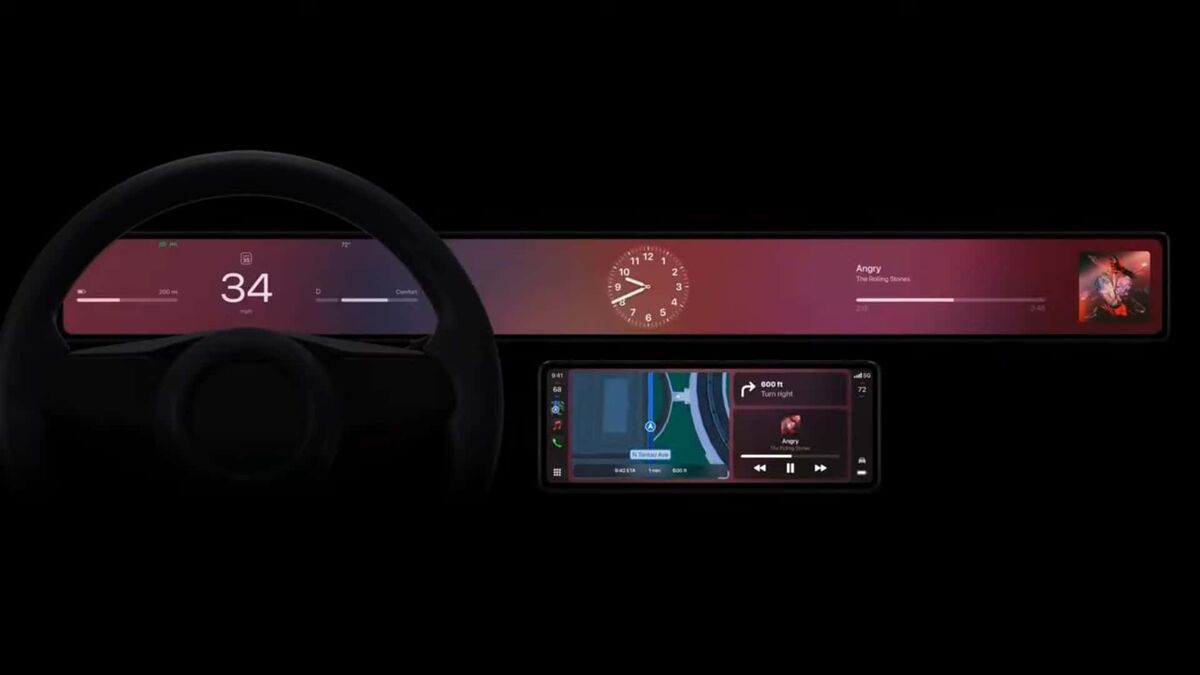
However, if this CarPlay 2.0 is well adopted by users, well integrated by the first manufacturers and the general experience is really above what the market leaders offer (Tesla, Rivian, Android Automotive…), the public can also have their say, as was the case for brands which initially refused CarPlay (like Toyota, Honda…) before change their minds in the face of customer pressure. Apple’s idea is also to standardize the UIs between vehicles : if you change brands, you will always have the same interfaces with a few slight differences.

To tell you all, I would have preferred Apple to offer a real competitor to Android Automotive, which runs natively in the vehicle, with easy-to-adapt programming interfaces – a sort of carOS ultimately, which seems to have been developed for the Apple Car. Here, I have the impression that the Cupertino teams have preferred to avoid all the problems linked to the heterogeneity of the park to concentrate on a purely remote
centralized around the iPhone, with all the hazards inherent to the constraints of non-ventilated devices, limited in power and above all, which are not dedicated to an automobile display. Quite a challenge!
Will Apple succeed in its bet? Answer… by the end of the year for the presentation of the first compatible model!

